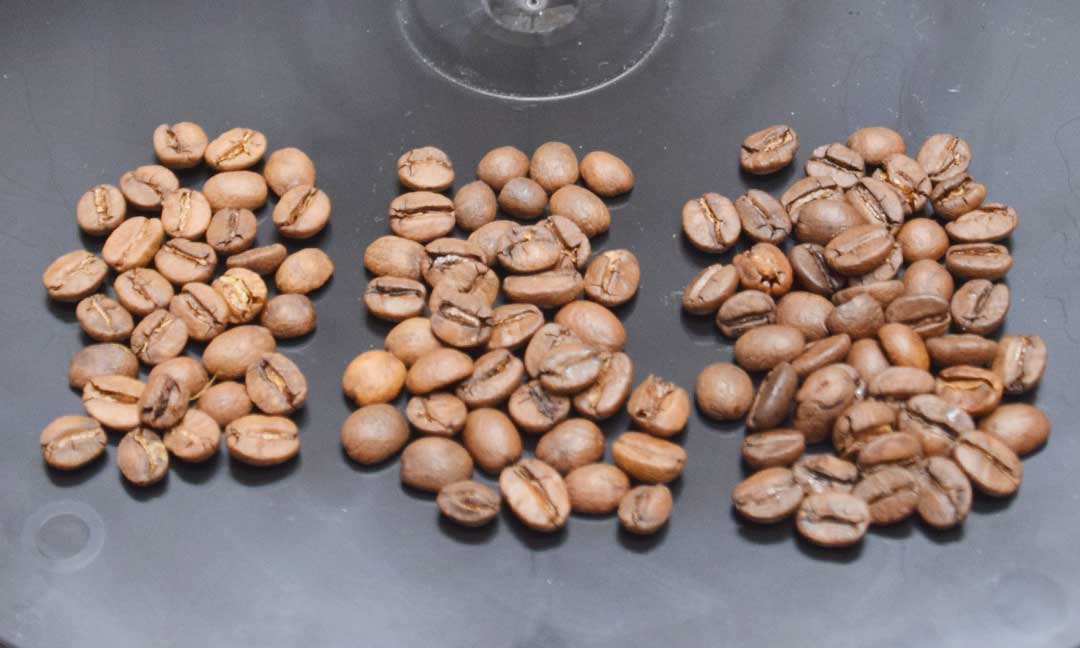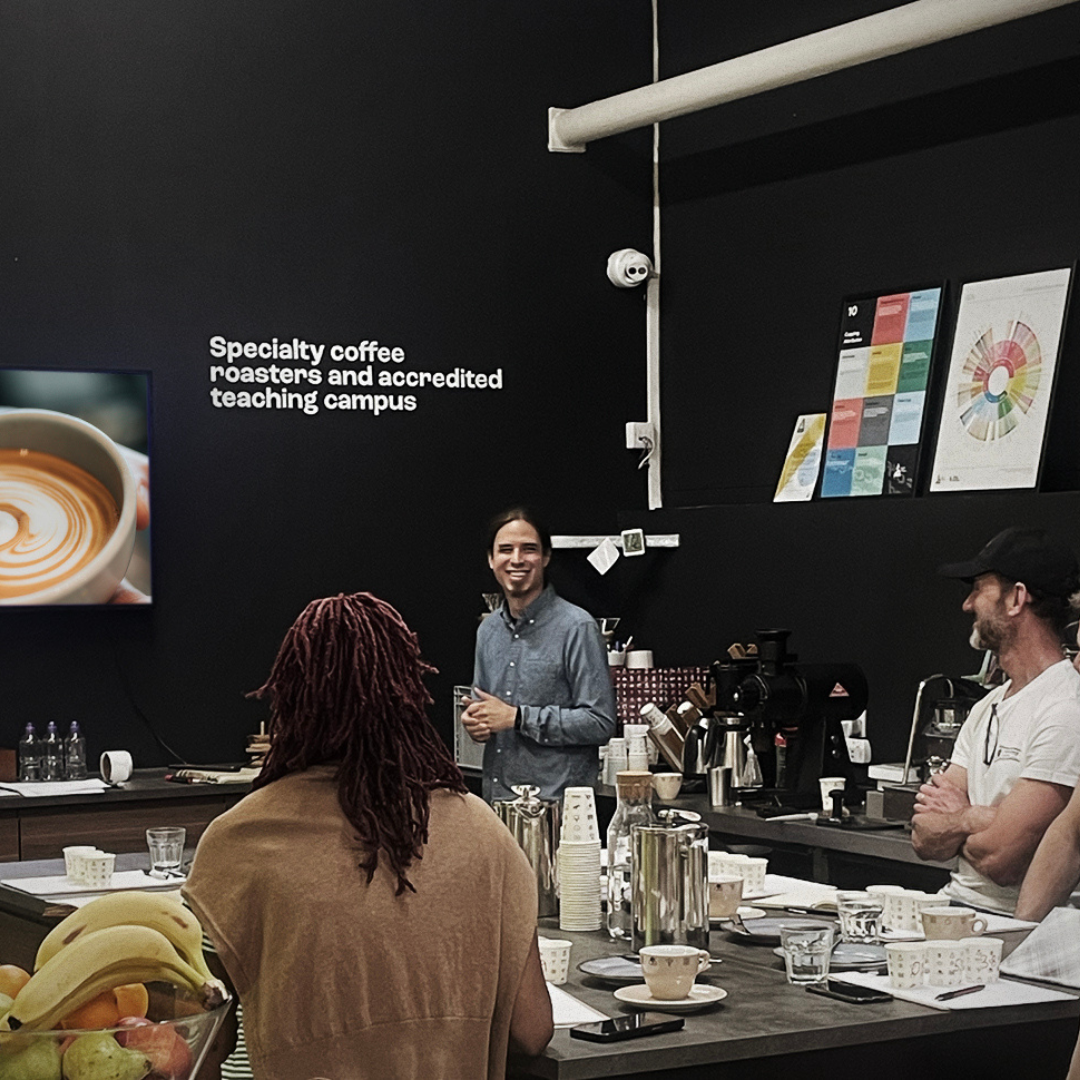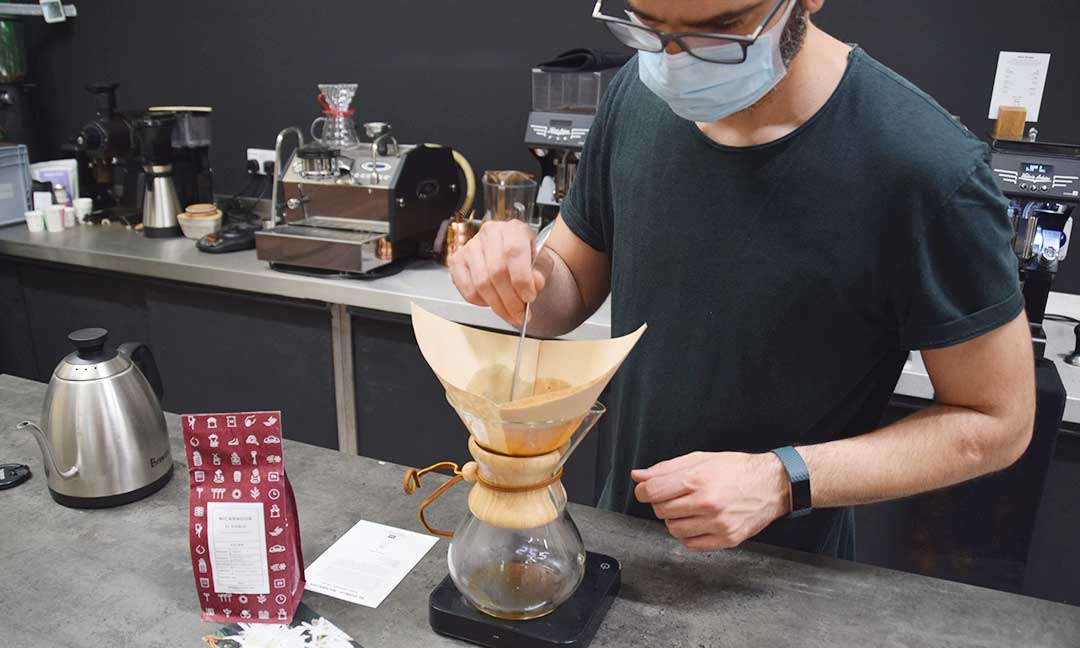
Coffee Roast Levels Explained - light, medium and dark roasts
Light, medium and dark roasts
I have recently had the opportunity to start roasting coffee at 39 Steps Coffee, and through that experience it has been really interesting to go back to the source of some of the terminology often used to describe coffee. Each company has their own set of descriptors that they use, and it boils down to their approach to coffee and coffee roasting, but also how they communicate the differences in their coffee roasts offering to the customer.
To provide some context I will talk from the 39 Steps Coffee’s approach to roasting, which is very much rooted in speciality coffee, and it is also where I have learnt how to roast coffee. As an exercise at a recent cupping, we setup different roasts levels on the table. We knew that the roasts would taste different as the total roast time differed from each other, and the resulting roasts were visually lighter and darker in colour. That is where the Tonino comes in, for quality control and consistency we use a device called the "Tonino Color Meter".
What’s a Tonino?
On the cupping table we use our sense of smell and taste to evaluate our roasts, but crucially, we also use the Tonino device and its roast colour grading system to evaluate to the degree of which the coffee has been roasted. The main advantage is that it gives us an empirical value that is quantifiable and repeatable.
The Tonino colour is used to measure the colour of ground coffee, and we always grind to the same grind size for consistency. The colour scale goes as follows:
115–130 Cinnamon
100–115 Light
90–100 City
80–90 Medium
70–80 Full City
60–70 Dark
50–60 Heavy
Source: The Tonino colour scale

The photo above shows 3 different roasts of the same coffee. From left to right, 107, 95 and 85 on the Tonino colour scale.
Note that the definition of City, Medium roasts, etc. vary from region to region, and from company to company, reinforcing the need of using a colour grading system. As a general rule of thumb, our own approach is to roast on the lower end of what Tonino calls Light for our Filter coffees, and we find that the City style roasts are best suited for an espresso coffee.
We roast to highlight the most desirable flavour notes of the coffee depending on the intended brewing method, filter pour-over or espresso type coffee.
Same coffee, three very different roasts
As part of the experiment we roasted the same coffee to three different roast levels. The cupping was blind, meaning that we had several coffees placed randomly on the table to eliminate bias, and we also had other additional coffees on the table as well.
Coffee #1 - Tonino scale 120
This coffee had a dry flagrance of wholemeal bread, hay, light tobacco. Aroma when wet, like light hay. Flavour was sweet but grassy. Aftertaste was sweet, dry long lasting, silky, a touch dry. Acidity was medium, but the body was medium to light. Overall, not a balanced cup and although it had some sweetness it was unpleasant to drink.
Coffee #2 - Tonino scale 109
Some sweetness, rich and deep dry fragrance. Floral and bread aroma when wet. Flavour was not very developed, nothing really stood out. Sharp acidity. Aftertaste was pleasant but verging on bitter. Body was good. Overall, the flavours didn’t taste like they were very developed.
Coffee #3 - Tonino scale 103
Flagrance reminded me of milk cooking chocolate, stone fruit. Fresh sourdough aroma when wet. Flavour notes of peach, golden sugar, some coffee fermentation. Low Acidity. Body was good with a silky smooth aftertaste. Balanced. Much more interesting that the previous cup.
For the first three coffees, it was really interesting to see how much a difference in taste there was, even in as little as 6 pts difference, between 103 and 109 on the Tonino colour scale - this translates to a difference in thermal energy applied over time when roasting, and a few seconds more or less to the development time, adding to the total roast time.
In addition to the above roasts we also roasted another coffee past what is considered City, to see what impact it would have on flavour.
Coffee #4 - Tonino scale 85
Musky, deep and heavy fragrance. Smokey bread aroma when wet. Bitter flavours and burnt charred aftertaste. Muted acidity, Heavy body. Overall, not a balanced cup.

Although this last coffee sits on the Tonino scale of 85, it is darker than what we would usually roast for espresso here at 39 Steps Coffee. We put in the hopper to see what the resulting espresso would be like. The resulting espresso was enjoyable, but there was a clear trade-off between flavour as the roasty notes were the dominant flavour and much more prominent than the fruiter, more complex and less bitter fruit notes which we aim for with our espresso roasts. In general, these types of dark roasts are less interesting to us, as we try to respect the individual flavour notes from origin.
And in conclusion
From this experiment we can see a correlation between roasts levels and flavour notes. It is worth saying that all coffees are different, etc, but a very light roast above 115 on the Tonino colour scale, or what Tonino defines as "Cinnamon" will usually be grassy and unpleasant to drink while roasting too dark will mute most of the origin’s flavour notes - both will be unpleasant to drink. Our preference at 39 Steps Coffee from a flavour perspective are the light and medium roasts based on the Tonino colour scale. These are the roasts that bring us the most joy on the cupping table and in the cup!
Learn to roast with us
One of the things I love the most about 39 Steps Coffee is the passion for sharing coffee knowledge, and that coffee training is at the core of the 39 Steps Coffee mission.
The is why we now teach Coffee Roasting Essentials Masterclass which are a great roasting experience for enthusiasts and home roasters alike.
We also teach the SCA Roasting certified course, which is aimed at budding roasters and and seasoned professionals alike. Here is a video providing a brief overview of the course structure and a glimpse of our training facilities and roastery in London.
We’ve tried to provide all the detail you could ever need on the Masterclass and SCA course pages, however If you have any questions, just send us email to info@39stepscoffee.com or DM us on instagram @39stepscoffee_





Leave a comment
This site is protected by reCAPTCHA and the Google Privacy Policy and Terms of Service apply.